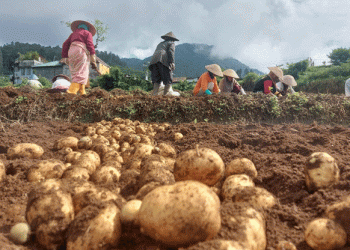#potatostarch #globalproduction #sustainability #foodindustry #naturalthickeningagent #prospects #consequences #2030.
Potato starch is a versatile and widely used ingredient in various industries, including food, paper, textile, and pharmaceuticals. The global production of potato starch has been steadily increasing over the years, with a projected growth rate of 4.2% CAGR from 2021 to 2030. This article explores the prospects for the development of the potato starch industry, as well as the potential consequences of its growth.
Development: Potato starch is derived from potatoes, a crop that is widely cultivated in many parts of the world. The production of potato starch involves several processes, including washing, crushing, and separation, which results in a fine white powder that is highly valued for its unique properties. Potato starch is known for its excellent thickening and binding abilities, making it a popular ingredient in various food products, such as soups, sauces, and baked goods. Additionally, it is used in non-food applications, such as adhesives, paper, and textiles.
The global production of potato starch has been on an upward trend in recent years, with a projected growth rate of 4.2% CAGR from 2021 to 2030. This growth can be attributed to several factors, including the increasing demand for convenience foods and the rise in health consciousness among consumers. Potato starch is a natural and gluten-free alternative to other thickening agents, making it a popular choice for people with dietary restrictions.
The development of the potato starch industry has several potential consequences, both positive and negative. On the one hand, the increasing demand for potato starch could lead to higher incomes for farmers and increased employment opportunities in rural areas where potato cultivation is common. On the other hand, the expansion of potato cultivation could lead to deforestation and the loss of biodiversity, as well as increased water consumption and soil erosion.
Despite these potential consequences, the prospects for the development of the potato starch industry remain promising. The increasing demand for natural and sustainable ingredients is expected to continue driving the growth of the potato starch market, with a projected market value of $1.42 billion by 2030.
In conclusion, the global production of potato starch is expected to continue growing at a steady pace, with several factors driving its expansion. However, it is important to consider the potential consequences of this growth and to implement sustainable practices to minimize its impact on the environment.








